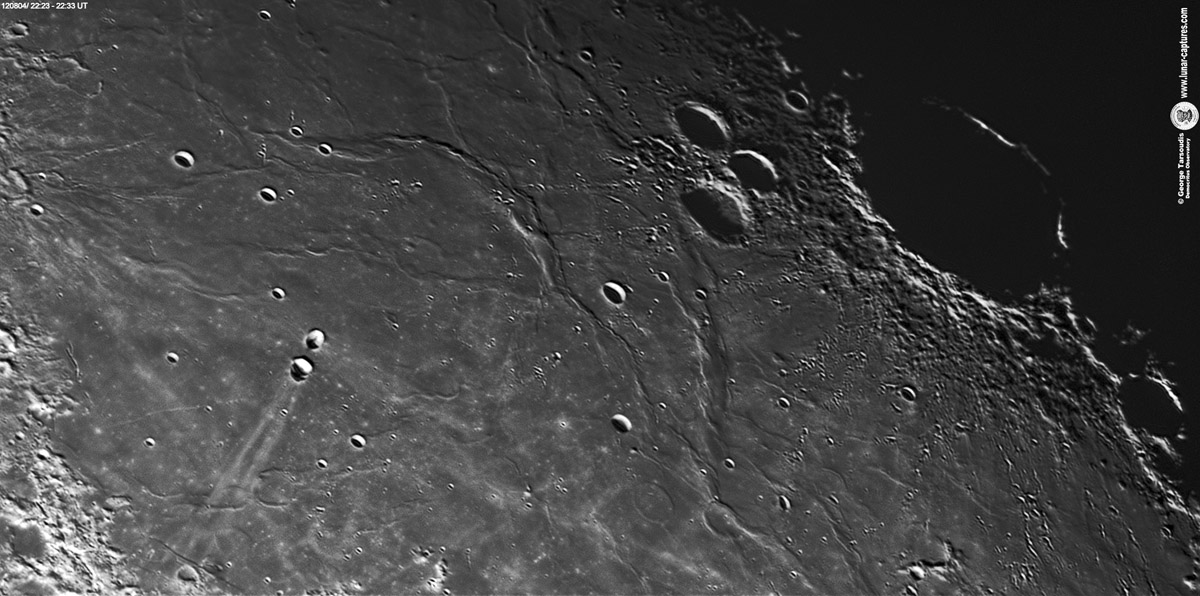August 7, 2012
Intersections

image by George Tarsoudis, Alexandroupolis, Greece
This lovely image by George combines features normally seen with both low and high angles of illumination. The strong and curved mare ridges of eastern Fecunditatis reflect the stresses as the solidified mare lavas subsided. What is not well understood is the origins of secondary ridges such as those that intersect nearly at right angles the curved Cayeux Ridge near the top. Closed circular ridges such as the two near bottom center are assumed to be lava-covered impact craters but there are so many similar ridge circles - look at the the bottom left of the mare - that you have to wonder if there is some other origin. Under a higher Sun the low-slope ridges will disappear and the rays will become brighter. The most famous rays here are the nearly parallel railroad track-like rays from Messier A. Messier itself is said to have butterfly rays that radiate away in directions perpendicular to the tracks, but those butterfly rays are also radial to Taruntius which is just off the left edge of the image. Two other radial rays from Taruntius intersect the Messier A rays, which should be younger and do appear to be on top. Faint rays also radiate from Langrenus, bathed in shadow at right. Between Messier and Langrenus is another ray - better seen under higher Sun conditions - that is approximately aligned with the famous Rosse ray crossing Nectaris, which could be from Tycho. But going in the other direction this ray may have a more interesting origin - it could be a continuation of a ray passing just east of Crisium that is from Giordano Bruno on the farside.
Chuck Wood
Technical Details
August 4, 2012. 10 inch @f/6.3, + camera Unibrain fire-i 785 + filters Red + barlow 3X.
Related Links
Rükl plate 48
George's Lunar Captures website
Yesterday's LPOD: Secondary Rays
Tomorrow's LPOD: What You Can Do From Earth



